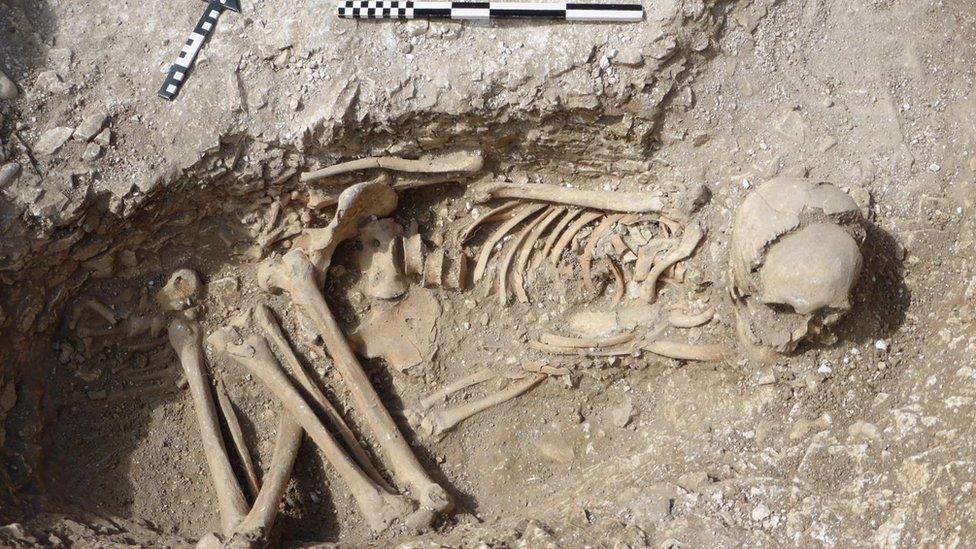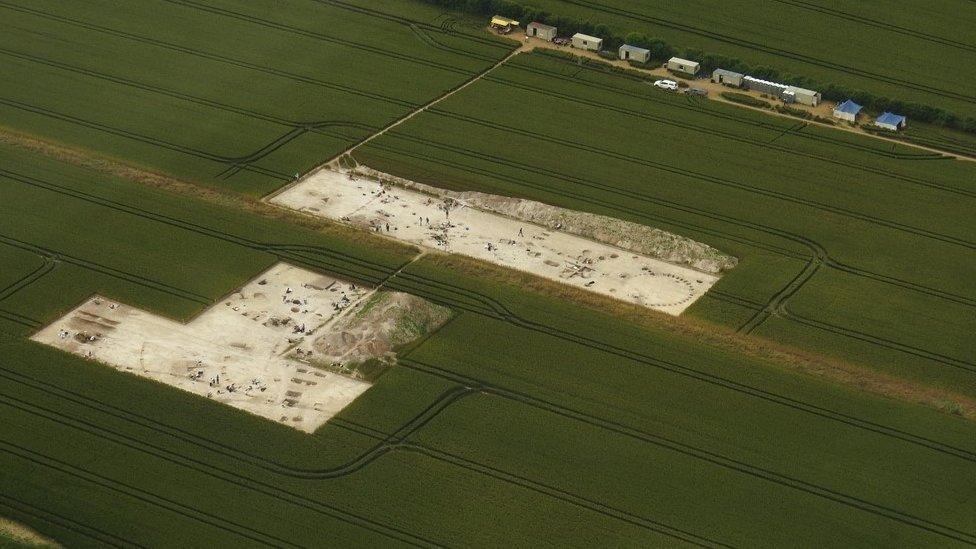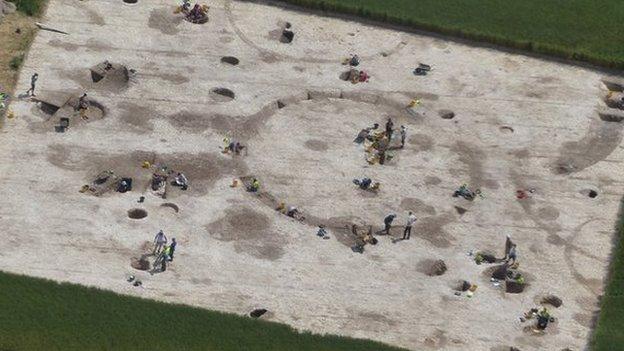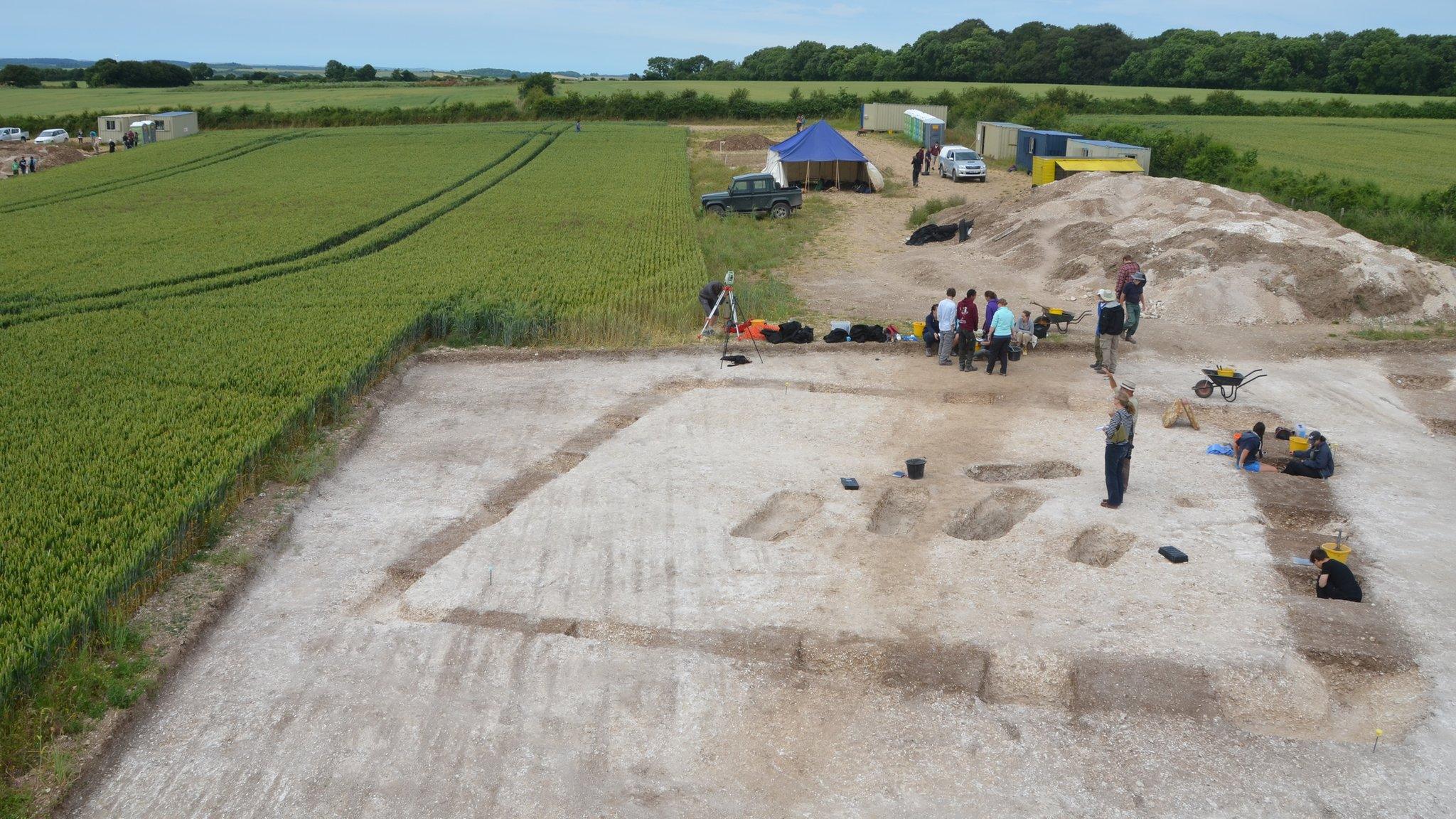Winterborne Kingston dig unearths nine Iron Age skeletons
- Published

Most of the skeletons in the Iron Age cemetery were found in the foetal position
Nine Iron Age skeletons uncovered during a dig could "completely change our understanding" of how ancient people lived, archaeologists claim.
The well-preserved remains were found by Bournemouth University students during a dig at a pre-Roman town near Winterborne Kingston, Dorset.
Lecturer Paul Cheetham said the finds were "significant" as most tribes cremated or put bodies in wetlands.
The skeletons have been taken to the university to be examined further.
Mr Cheetham, a senior lecturer in archaeological science at Bournemouth University, said: "Understanding of our Iron Age past is significantly improved by this find, given the advances in scientific investigation such as DNA and isotope analysis which provide an insight into population movements and ancestry.
"Accessing skeletal information from this date in the UK is extremely rare. This data could completely change our understanding of the Iron Age."
It is hoped tests will reveal the ages, health, diet, origin and cause of death of the people whose remains have been found.
They were all found in a coiled up position, similar to a foetal position, in a series of oval pits.

The Iron Age remains were found in oval pits with the bodies placed in a tightly flexed position

Cleaning one of the nine Iron Age skeletons discovered at the southern edge of the dig site
Miles Russell, Durotriges Project co-director, said: "It's a very, very exciting discovery.
"We call them 'crouched burials' they are all lying on their right-hand side with their hands under the chin, legs drawn up with the head facing north."
Mr Russell said some were found buried with joints of meat and pots which would have contained a drink "showing they believed in life after death".
The skeletons were uncovered along with one Roman grave in a late Iron Age cemetery during an annual 26-day archaeological field school dig by university students.
The excavation also revealed a late or post Roman farming settlement, made up of five buildings along with kilns and ovens, established around AD300-450.

The dig covers an area of about 10 acres (four hectares) near the village of Winterborne Kingston

Bournemouth University said the dig had revealed a "very densely settled area" with roundhouses, animal pens, storage and agricultural outbuildings

The Durotriges Project
The town of 150 roundhouses dubbed 'Duropolis' was uncovered by the students in 2015
Since its discovery between 300-400 roundhouses have been located
The site appears to have been occupied from around 100BC
The site covers an area of just under 10 acres
The students were taking part in the Durotriges Project, run annually by the university, studying the transition from the late Iron Age to the early Roman period in southern England
Source: Bournemouth University

- Published11 July 2015

- Published1 July 2014
